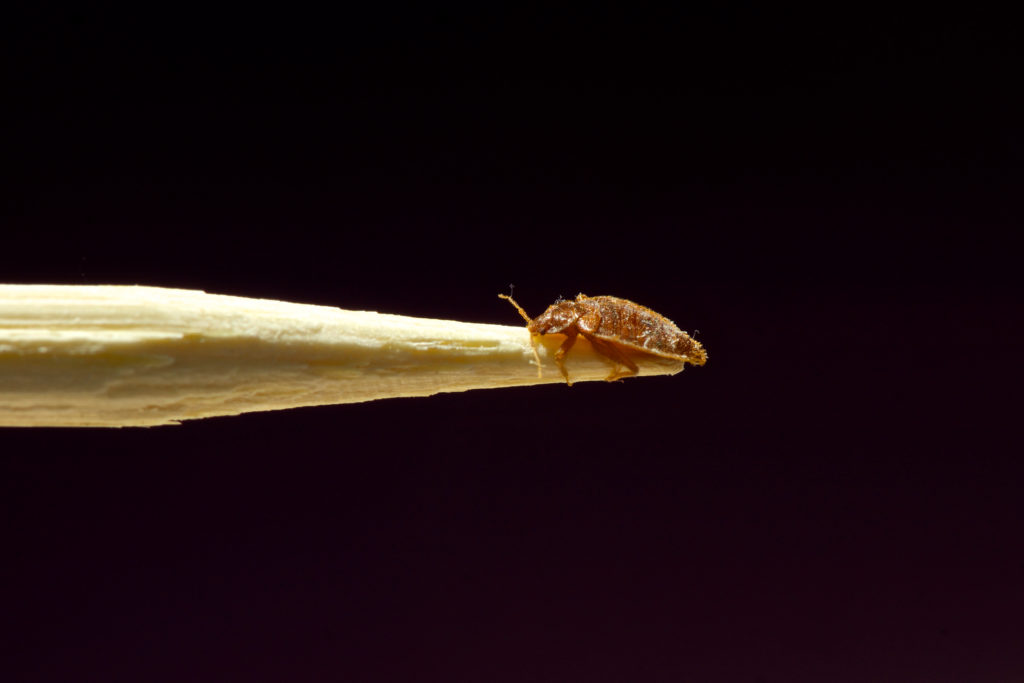Bedbugs are one of most people’s worst nightmares. Activity is on the rise all across the globe, and can be a very stressful and costly inconvenience. Early detection can greatly increase a treatment’s success rate, however, minor infestations may be harder to identify. One of the best things you can do as an individual, is to learn how and where to find bedbug activity should you have concerns.
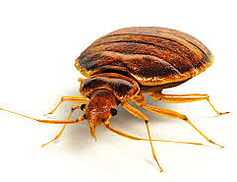
Bedbugs are trans-locational pests, which means they spread through the help of humans. The bugs can hitch a ride on used furniture, packages, or human beings themselves. They are blood feeders that prefer human blood, and are attracted to the CO2 we produce when we exhale. Although more active at night, bedbugs have no problem feeding in the daylight if they are hungry. They need to feed every 14 days in order to continue to mate and reproduce. A female can produce 1-3 eggs a day, and can live up to a full year in ideal conditions. Likewise, these bugs have the ability to go into a “dormant” stage if a food source is not available, and still survive.
The bedbug must go through 5 stages of growth after emerging from its egg to reach adulthood. They need to feed at least once in between stages, and will shed its skin with each transition. As small nymphs, they can be very difficult to identify especially if they have not fed.
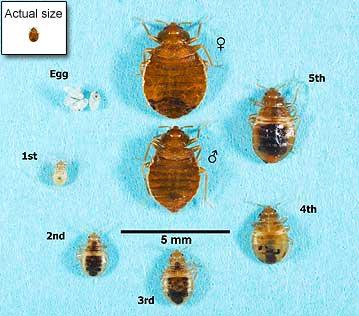 Adult bedbugs are about the size of an apple seed and can range in colour from tan to reddish-brown, depending on how recently they have fed. They have oval-shaped bodies that are as thin as a credit card, which makes it easy for them to harbour in small crack and crevice areas.
Adult bedbugs are about the size of an apple seed and can range in colour from tan to reddish-brown, depending on how recently they have fed. They have oval-shaped bodies that are as thin as a credit card, which makes it easy for them to harbour in small crack and crevice areas.
Aside from physically seeing a bedbug, there may be other indicating factors of a bedbug infestation. These little creatures leave plenty evidence of their presence, you just need to know what to look for.
Blood
Because these creatures thrive on human blood, it’s not uncommon for a few drops to get left behind on bedsheets or clothing. Stains can also occour when an engorged bug is crushed.
Spotting/Black Dots
When bedbugs are present, they will leave behind tiny little brown/black dots. These tiny black dots are essentially their fecal matter left behind after digesting.
Skin Casings
As mentioned earlier, bedbugs need to evolve through 5 stages of development before reaching adulthood. In each transition, a bug will shed its outer casing in order to grow, leaving behind the discarded shell. These casings are translucent and are an indication of bedbug activity.
Eggs
Bedbug eggs are white and tiny (1mm). The outer shell protects against common pesticides, and they can easily go unnoticed especially on a white mattress. A mother bedbug will use the adhesive in her saliva to adhere her eggs to a surface area. These eggs are slightly bigger than a grain of salt.
Now that you know what to look for, lets talk about where to look.
Bedbugs will often be found in an area close to a food source, but will branch out to other areas of the room if populations are high. Start with checking your mattress, boxspring, and bed frame for any of the signs described above. Be sure to use a flashlight and inspect every inch, lifting any edges, or folds in fabric. Take the time to check crack & crevices of bedframes, headboards, and boxsprings as bedugs will often be found here.

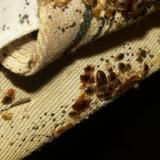
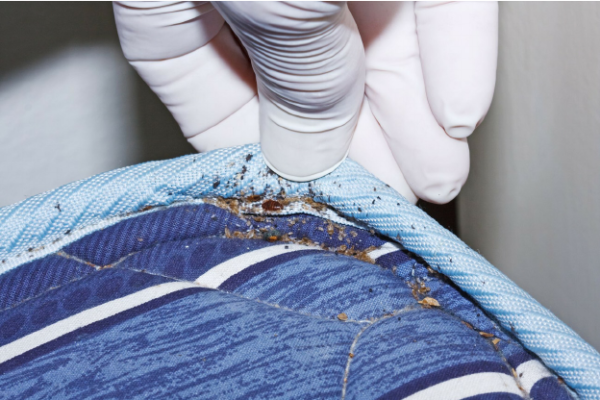
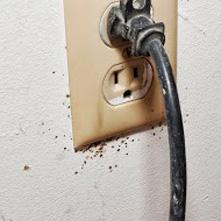
Likewise, other areas to inspect include (but are not limited to) couches, computer chairs, common seating areas, nightstands, dressers, recliner chairs, electrical outlets, and baseboards.
Should you find any bedbug activity in your home or business, it is recommended that you contact a professional pest control company to ensure the issue does not spread. Our technicians at The Bug Guys are available for inspections and treatment at 548-888-BUGS (2847).

